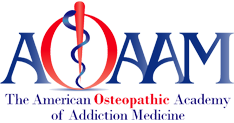The Department of Health and Human Services (HHS) issued a final rule on July 6, 2016 to increase access to Medication Assisted Treatment (MAT) with buprenorphine. This Rule will become effective on August 5, 2016. Below are key points that outlines which practitioners are eligible for an expanded patient limit of 275. (To read the entire rule click here)
Who is Eligible for a Patient Limit of 275 Under the Final Rule?
Under routine conditions, a practitioner would qualify for the higher limit in one of two ways:
- by possessing subspecialty certification in addiction medicine or addiction psychiatry, or
- by practicing in a Qualified Practice Setting (QPS) as defined in the rule. In either case, practitioners with the higher limit would have to possess a waiver to treat 100 patients for at least 1 year in order to gain experience treating at a higher limit.
The purpose of offering the 275 patient limit to practitioners in these two categories is to recognize the benefit offered to patients through: the advanced training and maintenance of knowledge and skill associated with the acquisition of subspecialty certification; and; the higher level of direct service provision and care coordination envisioned in the qualified practice setting.
In addition to ensuring higher quality of care, the criteria for the higher limit is intended to minimize the risk of diversion of controlled substances to illicit use and accidental exposure that could result from increased prescribing of buprenorphine.
Route 1 - Subspecialty Certification:
A practitioner with board certification in addiction would have the training and experience necessary to recognize and address behaviors associated with increased risk of diversion.
Route 2 – A Qualified Practice Setting (QPS)
The QPS is an alternative to advanced certification to acquire the new 275 patient limit. If you terminate your relationship with a QPS you return to the 100 patient limit.
What is a QPS?
- the ability to offer patients professional coverage for medical emergencies during hours when the practitioner’s practice is closed; this does not need to involve another waivered practitioner, only that coverage be available for patients experiencing an emergency even when the office is closed;
- the ability to ensure access to patient case-management services including behavioral health services;
- health information technology (health IT) systems such as electronic health records, when practitioners are required to use it in the practice setting in which he or she practices;
- participation in a prescription drug monitoring program (PDMP), where operational, and in accordance with State law. PDMP means a statewide electronic database that collects designated data on substances dispensed in the State. For practitioners providing care in their capacity as employees or contractors of a Federal government agency, participation in a PDMP would be required only when such participation is not restricted based on State law or regulation based on their State of licensure and is in accordance with Federal statutes and regulations; and
- employment, or a contractual obligation to treat patients in a setting that has the ability to accept third-party payment for costs in providing health services, including written billing, credit and collection policies and procedures, or Federal health benefits. (100% cash only clinics are out by design because “pill mills" were cash only).
NOTE:
The Higher 275 patient limit must be applied for every 3 years.
Final documentation construction is pending and a form will be available at www.samhsa.gov.
The Higher 275 patient limit may be revoked if there are violation of good practices.
Under the new increase, if you are outside of the standard of care, action can be taken and you will lose the waiver for the new limit.
Besides numbers what is the difference between the lower limit and the higher limit?
- Practitioners approved to treat up to 275 patients will also be required to accept greater responsibility for providing behavioral health services and care coordination, and ensuring quality assurance and improvement practices, diversion control, and continuity of care in emergencies.
- The higher limit will also carry with it the duty to regularly reaffirm the practitioner’s ongoing eligibility and to participate in data reporting and monitoring as required by SAMHSA.
